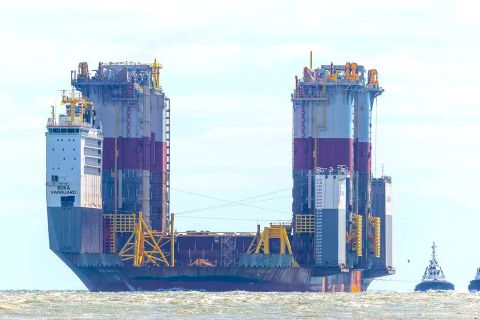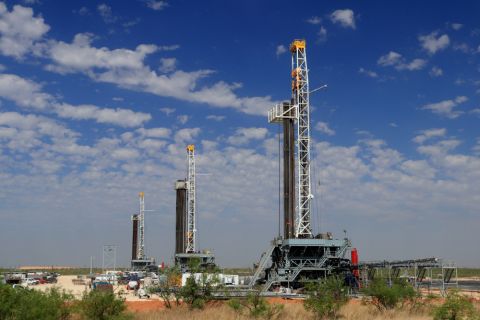
Geothermal drilling well (Source: Shutterstock)
As geothermal energy players position themselves for a potential drilling boom, Chevron has returned to action in the hunt for heat.
The oil company was once one of the largest geothermal operators in the world with assets in the Asia-Pacific region. Limited by scale, geography and capital, it exited conventional geothermal in 2017 with the sale of assets in Indonesia and the Philippines to Star Energy Consortium. However, oil and gas technologies’ application to geothermal assets has changed the value proposition.
“In a world where the U.S. grid will need 700-900 GW of additional clean firm capacity by 2050, next-gen geothermal could provide 90 GW by 2050, and up to 300 GW depending on the development of storage capabilities and other emerging technologies,” according to the U.S. Department of Energy (DOE).
Next-generation geothermal energy uses existing oil and gas technologies to capture heat and unlock geothermal energy from anywhere. With an enhanced geothermal system, fluid is circulated in a pair of wells connected by fractures created in hot reservoirs. Closed-loop geothermal systems, also referred to as advanced geothermal systems, circulate fluids through closed wellbore loops in the subsurface. The heat extracted can be used to heat or cool homes and buildings via direct use heat or generate electricity with higher temperature geothermal resources.
Chevron is pursuing geothermal pilot projects in California and Japan. It is testing technologies to unlock the next generation of geothermal using both enhanced geothermal systems and advanced closed loop systems.
In California, Chevron New Energies is using innovative drilling and stimulation techniques to harness heat near an existing geothermal field in Sonoma County, California. The project was one of three to receive DOE funding earlier this year. In Japan, the company teamed up with Mitsui Oil Exploration Co. Ltd. to pilot test advanced closed loop technology.
Chris Powers, vice president of CCUS (carbon capture, utilization and storage) for Chevron New Energies, recently shared thoughts on the company’s geothermal efforts and what it will take to scale the sector.
Velda Addison (VA): What will it take for geothermal to lift off and surpass 4 gigawatts in the U.S.?
Chris Powers (CP): There are really three main things that we view as critical to advancing geothermal: partnerships, technology innovation and policy enablement.
The oil and gas industry has made many technology contributions leveraging our experience in subsurface, reservoir management, etc.

Many technologies already exist, but the big questions are, “how do we adapt them to use in this new application and large-scale demonstrations? How do we bring these technologies together as a system? How do we make them cost effective at scale?”
Finally, strong policy enablement and discussions to facilitate the growth of geothermal is happening across the globe led by the U.S.; that is going to open up more business opportunities to de-risk and scale.
Power markets; policies; business models; and pricing mechanisms will need to continue to evolve, reflecting the value of clean base power across the entire generation to customer power value chain to provide the price signals supportive of development of projects at scale once the technologies are ready.
VA: What technology and expertise can the oil and gas industry, and Chevron in particular, bring to geothermal to help it achieve scale effectively and cost-efficiently, considering high upfront costs and risks are among the main challenges for geothermal?
CP: Geothermal is uniquely positioned to unlock renewable and non-intermittent power that can greatly complement, and be an alternative to, other renewable sources to meet growing renewable power demand.
Novel geothermal, with its ability to access resources closer to load centers and customers, can enable widespread deployment of geothermal resources to meet baseload renewable power demand. Chevron is interested in novel approaches, including low temperature hydrothermal, Advanced Closed Loop (ACL) and Enhanced Geothermal Systems (EGS).
Geothermal is very well aligned with our core capabilities, particularly in subsurface development planning, drilling and completions; land and minerals management; and facilities designs and operations. We believe we can leverage that experience to unlock technology, de-risk and scale next generation geothermal.
VA: How is Chevron working to advance novel technologies? Can you tell me more about the EGS pilot demonstration in California? What is the significance of this project for the energy industry? Which drilling and stimulation techniques are being used, and at what depths?
CP: Which brings us to partnership. No one company, government institution/entity or university is going to be able to do this on their own. It’s essential for us to collaborate and find partners that are like-minded, that bring different skill sets, that can come together and deliver the affordable and reliable energy that the world needs at a lower carbon intensity.
Chevron is proud to have been selected for award negotiation by the U.S. Department of Energy, and we applaud DOE’s efforts to support new geothermal development in the U.S. Through this grant funding, Chevron plans to test this novel geothermal technology near an existing geothermal field in Northern California. Chevron plans to employ innovative technologies to reduce well costs and increase well productivity. This effort is essential to closing technology and cost gaps to achieve the DOE’s goals for enhanced geothermal systems (EGS).
Project learnings will be used not only to improve the effectiveness of novel geothermal technologies, reduce the costs of implementation and advance widespread commercial deployment of EGS across the U.S., but also help us understand permitting processes and development cycles.
VA: Are there any other geothermal projects you want to highlight? The advanced closed loop geothermal pilot in Japan? Weepah Hills in Nevada?
CP: We’ve formed a joint venture with Baseload Capital, our first potential project targeted in Nevada. We’re collaborating with Mitsui Oil Exploration Co. Ltd. to pilot a key novel geothermal technology in Japan.
We have formed a joint venture with PT Pertamina Geothermal Energy to explore and develop geothermal assets.
We are part of a consortium that has been awarded a contract for a nationwide survey to evaluate Singapore’s geothermal potential.
And, we are working to test novel geothermal technologies and development opportunities in Sonoma County, California.
VA: Is there anything else you want readers to know on the topic?
CP: Growing clean electrification as a critical element of decarbonization strategies, global net zero ambitions and energy security concerns are driving the strong growth potential for geothermal. Geothermal is an important solution source for lower carbon, reliable baseload electrification. We are also seeing some strong policy enablement in various markets. Geothermal can help us lower the carbon intensity of our existing operations, as well as creating new energy systems that are low carbon.
Recommended Reading
Vår Selling Norne Assets to DNO
2024-05-08 - In exchange for Vår’s producing assets in the Norwegian Sea, DNO is paying $51 million and transferring to Vår its 22.6% interest in the Ringhorne East unit in the North Sea.
SLB OneSubsea JV to Kickstart North Sea Development
2024-05-07 - SLB OneSubsea, a joint venture including SLB and Subsea7, have been awarded a contract by OKEA that will develop the Bestla Project offshore Norway.
EOG: Utica Oil Can ‘Compete with the Best Plays in America’
2024-05-09 - Oil per lateral foot in the Utica is as good as top Permian wells, EOG Resources told analysts May 3 as the company is taking the play to three-mile laterals and longer.
Chevron, Total’s Anchor Up and (Almost) Running
2024-05-07 - During the Offshore Technology Conference 2024, project managers for Chevron’s Anchor Deepwater Project discussed the progress the project has made on its journey to reach first oil by mid-2024.
SM Energy Targets Prolific Dean in New Northern Midland Play
2024-05-09 - KeyBanc Capital Markets reports SM Energy’s wells “measure up well to anything being drilled in the Midland Basin by anybody today.”






